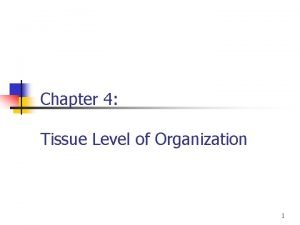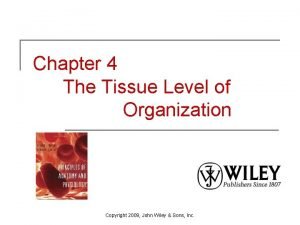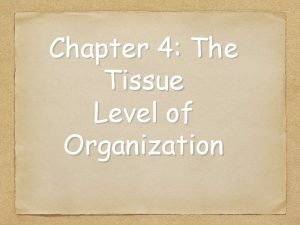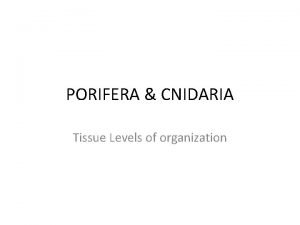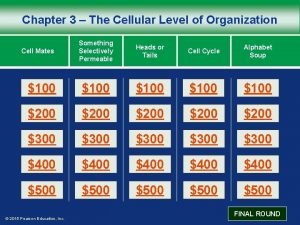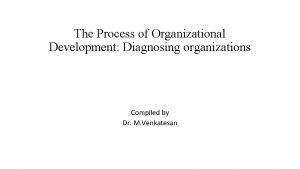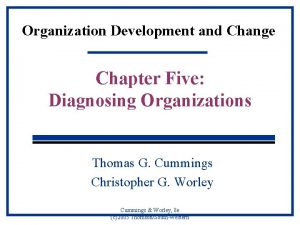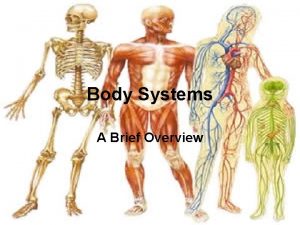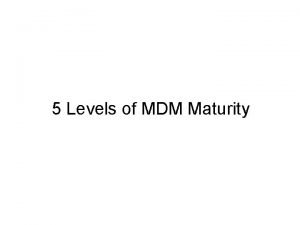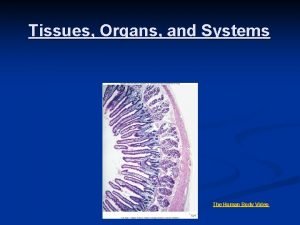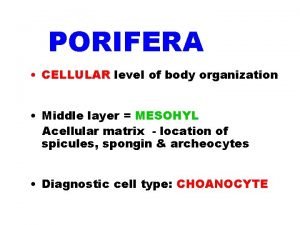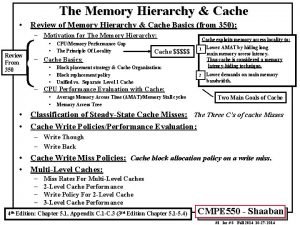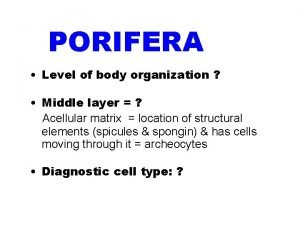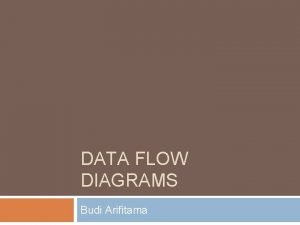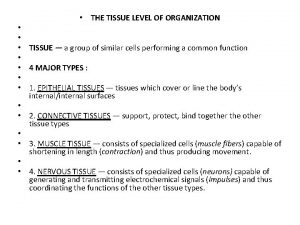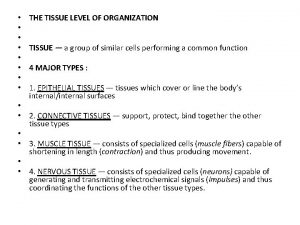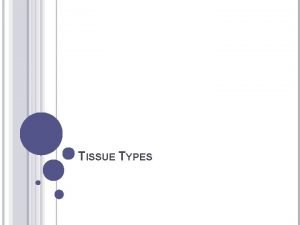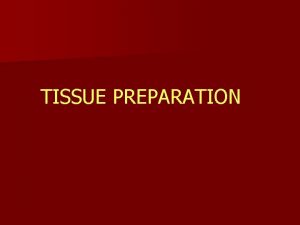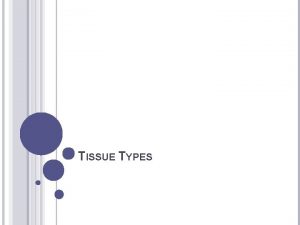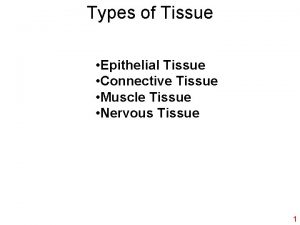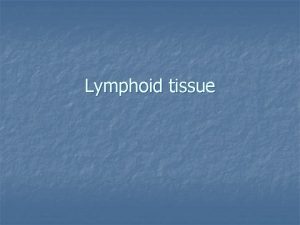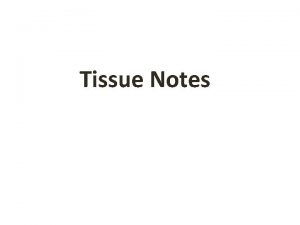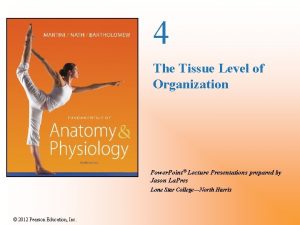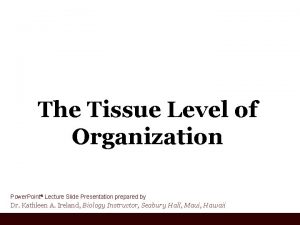Chapter 4 The Tissue Level of Organization Power



















































































- Slides: 83

Chapter 4 The Tissue Level of Organization Power. Point® Lecture Slides prepared by Jason La. Pres Lone Star College - North Harris Copyright © 2010 Pearson Education, Inc.

4 -1 The four tissue types are epithelial, connective, muscle, and neural Copyright © 2010 Pearson Education, Inc.

Four Types of Tissues • Tissues are groups of cells and cell products that perform specific, limited functions Copyright © 2010 Pearson Education, Inc.

Tissues of the Body Figure 4 -1 Copyright © 2010 Pearson Education, Inc.

4 -2 Epithelial tissue covers body surfaces, lines cavities and tubular structures, and serves essential functions Copyright © 2010 Pearson Education, Inc.

Epithelial Tissues • Characteristics of Epithelia – Cellularity (cell junctions) – Polarity (apical and basal surfaces) – Attachment – Avascularity – Regeneration Copyright © 2010 Pearson Education, Inc.

Epithelial Tissues • Functions of Epithelial Tissue – Provide physical protection – Control permeability – Provide sensation – Produce specialized secretions (glandular epithelium) Copyright © 2010 Pearson Education, Inc.

Intercellular Connections • Support and Communication – CAMs (cell adhesion molecules): • Transmembrane proteins – Intercellular cement: • Proteoglycans – Hyaluronan (hyaluronic acid): • Glycosaminoglycans Copyright © 2010 Pearson Education, Inc.

Intercellular Connections • Cell junctions – Form bonds with other cells or extracellular material: • Tight junctions • Gap junctions • Desmosomes (macula adherens) Intercellular Connections Copyright © 2010 Pearson Education, Inc.

Intercellular Connections Figure 4 -2 Copyright © 2010 Pearson Education, Inc.

Intercellular Connections Figure 4 -2 Copyright © 2010 Pearson Education, Inc.

Intercellular Connections Figure 4 -2 Copyright © 2010 Pearson Education, Inc.

Intercellular Connections Figure 4 -2 Copyright © 2010 Pearson Education, Inc.

The Surface of Epithelial Cells Figure 4 -3 Copyright © 2010 Pearson Education, Inc.

Epithelial Renewal and Repair • Epithelia are replaced by division of germinative cells (stem cells) • Near basal lamina Copyright © 2010 Pearson Education, Inc.

4 -3 Cell shape and number of layers determine the classification of epithelia Copyright © 2010 Pearson Education, Inc.

Classification of Epithelia • Singular epithelium • Plural epithelia • Classes of Epithelia – Based on layers: • Simple epithelium: single layer of cells • Stratified epithelium: several layers of cells – Based on shape: • Squamous epithelia: thin and flat • Cuboidal epithelia: square shaped • Columnar epithelia: tall, slender rectangles Copyright © 2010 Pearson Education, Inc.

Copyright © 2010 Pearson Education, Inc.

Classification of Epithelia Figure 4 -4 Copyright © 2010 Pearson Education, Inc.

Classification of Epithelia Figure 4 -4 Copyright © 2010 Pearson Education, Inc.

Classification of Epithelia Figure 4 -4 Copyright © 2010 Pearson Education, Inc.

Classification of Epithelia Figure 4 -5 Copyright © 2010 Pearson Education, Inc.

Classification of Epithelia Figure 4 -5 Copyright © 2010 Pearson Education, Inc.

Classification of Epithelia Figure 4 -5 Copyright © 2010 Pearson Education, Inc.

Glandular Epithelia • Endocrine Glands – Release hormones: • Into interstitial fluid • No ducts • Exocrine Glands – Produce secretions: • Onto epithelial surfaces • Through ducts Copyright © 2010 Pearson Education, Inc.

Glandular Epithelia • Types of Secretions – Serous glands: • Watery secretions – Mucous glands: • Secrete mucins – Mixed exocrine glands: • Both serous and mucous Copyright © 2010 Pearson Education, Inc.

Glandular Epithelia • Mechanism of Secretion – Merocrine secretion: • Is produced in Golgi apparatus • Is released by vesicles (exocytosis) • For example, sweat glands – Apocrine secretion: • Is produced in Golgi apparatus • Is released by shedding cytoplasm • For example, mammary gland – Holocrine secretion: • Is released by cells bursting, killing gland cells • Gland cells replaced by stem cells • For example, sebaceous gland Copyright © 2010 Pearson Education, Inc.

Mechanisms of Secretion Figure 4 -6 Copyright © 2010 Pearson Education, Inc.

Copyright © 2010 Pearson Education, Inc.

4 -4 Connective tissue provides a protective structural framework for other tissue types Copyright © 2010 Pearson Education, Inc.

Connective Tissues • Characteristics of Connective Tissues – Specialized cells – Solid extracellular protein fibers – Fluid extracellular ground substance • The extracellular components of connective tissues (fibers and ground substance) make up the matrix – Majority of tissue volume – Determines specialized function Copyright © 2010 Pearson Education, Inc.

Connective Tissues • Functions of connective tissues – Support and protection – Transportation of materials – Storage of energy reserves – Defense of the body Copyright © 2010 Pearson Education, Inc.

Major Types of Connective Tissue Figure 4 -7 Copyright © 2010 Pearson Education, Inc.

Connective Tissues • Cell Types of Connective Tissue Proper – Fibroblasts – Macrophages – Adipocytes – Mast cells Copyright © 2010 Pearson Education, Inc.

Connective Tissues • Connective Tissue Fibers – Collagen fibers – Reticular fibers – Elastic fibers Copyright © 2010 Pearson Education, Inc.

Connective Tissues • Ground Substance – Is clear, colorless, and viscous – Fills spaces between cells and slows pathogen movement Copyright © 2010 Pearson Education, Inc.

Types of Connective Tissue Proper • Loose Connective Tissue – More ground substance, less fibers – For example, fat (adipose tissue) • Dense Connective Tissue – More fibers, less ground substance – For example, tendons Copyright © 2010 Pearson Education, Inc.

Cells and Fibers of Connective Tissue Proper Figure 4 -8 Copyright © 2010 Pearson Education, Inc.

Connective Tissue Proper Figure 4 -9 Copyright © 2010 Pearson Education, Inc.

Connective Tissue Proper Figure 4 -9 Copyright © 2010 Pearson Education, Inc.

Connective Tissue Proper Figure 4– 9 Copyright © 2010 Pearson Education, Inc.

Connective Tissues • Fluid Connective Tissues – Blood and lymph – Watery matrix of dissolved proteins – Carry specific cell types (formed elements) • Formed elements of blood – red blood cells (erythrocytes) – white blood cells (leukocytes) – platelets Copyright © 2010 Pearson Education, Inc.

Supportive Connective Tissues • Cartilage – Gel-type ground substance – For shock absorption and protection • Bone – Calcified (made rigid by calcium salts, minerals) – For weight support Copyright © 2010 Pearson Education, Inc.

Supportive Connective Tissues • Cartilage Matrix – Proteoglycans derived from chondroitin sulfates – Ground substance proteins • Chondrocytes (cartilage cells) surrounded by lacunae (chambers) Copyright © 2010 Pearson Education, Inc.

Supportive Connective Tissues • Cartilage Structure – No blood vessels: • Chondrocytes produce antiangiogenesis factor – Perichondrium: • Outer, fibrous layer (for strength) • Inner, cellular layer (for growth and maintenance) Copyright © 2010 Pearson Education, Inc.

Supportive Connective Tissues • Types of Cartilage – Hyaline cartilage: • Stiff, flexible support • Reduces friction between bones • Found in synovial joints, rib tips, sternum, and trachea – Elastic cartilage: • Supportive but bends easily • Found in external ear and epiglottis – Fibrous cartilage (fibrocartilage): • • Limits movement Prevents bone-to-bone contact Pads knee joints Found between pubic bones and intervertebral discs Copyright © 2010 Pearson Education, Inc.

Types of Cartilage Figure 4 -10 Copyright © 2010 Pearson Education, Inc.

Types of Cartilage Figure 4 -10 Copyright © 2010 Pearson Education, Inc.

Types of Cartilage Figure 4 -10 Copyright © 2010 Pearson Education, Inc.

Supportive Connective Tissues • Bone or osseous tissue – Strong (calcified: calcium salt deposits) – Resists shattering (flexible collagen fibers) • Bone cells or osteocytes – Arranged around central canals within matrix – Small channels through matrix (canaliculi) access blood supply • Periosteum – Covers bone surfaces – Fibrous layer – Cellular layer Copyright © 2010 Pearson Education, Inc.

Bone Figure 4 -11 Copyright © 2010 Pearson Education, Inc.

Copyright © 2010 Pearson Education, Inc.

4 -5 Membranes are physical barriers of four types: mucous, serous, cutaneous, and synovial Copyright © 2010 Pearson Education, Inc.

Membranes • Membranes – Are physical barriers – That line or cover portions of the body – Consist of: • An epithelium • Supported by connective tissues Copyright © 2010 Pearson Education, Inc.

Membranes • Four Types of Membranes – Mucous membranes – Serous membranes – Cutaneous membrane – Synovial membranes Copyright © 2010 Pearson Education, Inc.

Membranes • Mucous Membranes (Mucosae) – Line passageways that have external connections – In digestive, respiratory, urinary, and reproductive tracts – Epithelial surfaces must be moist: • To reduce friction • To facilitate absorption and excretion – Lamina propria: • Is areolar tissue Copyright © 2010 Pearson Education, Inc.

Membranes • Serous Membranes – Line cavities not open to the outside – Are thin but strong – Have fluid transudate to reduce friction – Have a parietal portion covering the cavity – Have a visceral portion (serosa) covering the organs Copyright © 2010 Pearson Education, Inc.

Membranes • Three Serous Membranes – Pleura: • Lines pleural cavities • Covers lungs – Peritoneum: • Lines peritoneal cavity • Covers abdominal organs – Pericardium: • Lines pericardial cavity • Covers heart Copyright © 2010 Pearson Education, Inc.

Membranes Figure 4 -12 Copyright © 2010 Pearson Education, Inc.

Membranes • Cutaneous Membrane – Is skin, surface of the body – Thick, waterproof, and dry • Synovial Membranes – Line moving, articulating joint cavities – Produce synovial fluid (lubricant) – Protect the ends of bones – Lack a true epithelium Copyright © 2010 Pearson Education, Inc.

Membranes Figure 4 -12 Copyright © 2010 Pearson Education, Inc.

4 -6 The three types of muscle tissue are skeletal, cardiac, and smooth Copyright © 2010 Pearson Education, Inc.

Muscle Tissue • Specialized for contraction • Produces all body movement • Three types of muscle tissue – Skeletal muscle: • Large body muscles responsible for movement – Cardiac muscle: • Found only in the heart – Smooth muscle: • Found in walls of hollow, contracting organs (blood vessels; urinary bladder; respiratory, digestive, and reproductive tracts) Copyright © 2010 Pearson Education, Inc.

Muscle Tissue Figure 4 -13 Copyright © 2010 Pearson Education, Inc.

Muscle Tissue Figure 4 -13 Copyright © 2010 Pearson Education, Inc.

Muscle Tissue Figure 4 -13 Copyright © 2010 Pearson Education, Inc.

4 -7 Neural tissue responds to stimuli and conducts electrical impulses throughout the body Copyright © 2010 Pearson Education, Inc.

Neural Tissue • Also called nervous or nerve tissue – Specialized for conducting electrical impulses – Rapidly senses internal or external environment – Processes information and controls responses Copyright © 2010 Pearson Education, Inc.

Neural Tissue • Neural tissue is concentrated in the central nervous system – Brain – Spinal cord Copyright © 2010 Pearson Education, Inc.

Neural Tissue • Two Kinds of Neural Cells – Neurons: • Nerve cells • Perform electrical communication – Neuroglia: • Supporting cells • Repair and supply nutrients to neurons Copyright © 2010 Pearson Education, Inc.

Neural Tissue • Cell Parts of a Neuron – Cell body: • Contains the nucleus and nucleolus – Dendrites: • Short branches extending from the cell body • Receive incoming signals – Axon (nerve fiber): • Long, thin extension of the cell body • Carries outgoing electrical signals to their destination Copyright © 2010 Pearson Education, Inc.

Neural Tissue Figure 4 -14 Copyright © 2010 Pearson Education, Inc.

4 -8 The response to tissue injury involves inflammation and regeneration Copyright © 2010 Pearson Education, Inc.

Tissue Injuries and Repair • Tissues respond to injuries to maintain homeostasis – Cells restore homeostasis with two processes: • Inflammation • Regeneration Copyright © 2010 Pearson Education, Inc.

Tissue Injuries and Repair • Inflammation = inflammatory response – The tissue’s first response to injury • Signs and symptoms of the inflammatory response include – Swelling – Redness – Heat – Pain Copyright © 2010 Pearson Education, Inc.

Tissue Injuries and Repair • Inflammatory Response – Can be triggered by: • Trauma (physical injury) • Infection (the presence of harmful pathogens) Copyright © 2010 Pearson Education, Inc.

4 -9 With advancing age, tissue repair declines and cancer rates increase Copyright © 2010 Pearson Education, Inc.

Aging and Tissue Structure • Speed and efficiency of tissue repair decrease with age due to – Slower rate of energy consumption (metabolism) – Hormonal alterations – Reduced physical activity Copyright © 2010 Pearson Education, Inc.

Aging and Cancer Incidence • Cancer rates increase with age – 1 in 4 people in the United States develops cancer – Cancer is the #2 cause of death in the United States – Environmental chemicals and cigarette smoke cause cancer Copyright © 2010 Pearson Education, Inc.

Aging and Cancer Incidence • Three most common types of skin cancer – Basal cell carcinoma – Squamous cell carcinoma – Malignant melanoma Copyright © 2010 Pearson Education, Inc.

Aging and Cancer Incidence The ABCD rule is another guide to the usual signs of melanoma. Be on the lookout and tell your doctor about spots that have any of the following features: A is for Asymmetry: One half of a mole or birthmark does not match the other. B is for Border: The edges are irregular, ragged, notched, or blurred. C is for Color: The color is not the same all over and may include shades of brown or black, or sometimes with patches of pink, red, white, or blue. D is for Diameter: The spot is larger than 6 millimeters across (about ¼ inch – the size of a pencil eraser), but melanomas can sometimes be smaller than this. Copyright © 2010 Pearson Education, Inc.

Aging and Cancer Incidence • Other warning signs are: – – – A sore that does not heal Spread of pigment from the border of a spot to surrounding skin Redness or a new swelling beyond the border Change in sensation – itchiness, tenderness, or pain Change in the surface of a mole – scaliness, oozing, bleeding, or the appearance of a bump or nodule Copyright © 2010 Pearson Education, Inc.

Aging and Cancer Incidence Copyright © 2010 Pearson Education, Inc.
 Chapter 4 the tissue level of organization
Chapter 4 the tissue level of organization Chapter 4 the tissue level of organization
Chapter 4 the tissue level of organization Chapter 4 the tissue level of organization
Chapter 4 the tissue level of organization Cnidaria level of organization
Cnidaria level of organization Real power and reactive power
Real power and reactive power Jaringan epitel dapat ditemukan di
Jaringan epitel dapat ditemukan di Chapter 3 the cellular level of organization
Chapter 3 the cellular level of organization Chemical level of organization
Chemical level of organization The chemical level of organization chapter 2
The chemical level of organization chapter 2 Process organization in computer organization
Process organization in computer organization Organization by point
Organization by point What is a pyramid of biomass
What is a pyramid of biomass Hát kết hợp bộ gõ cơ thể
Hát kết hợp bộ gõ cơ thể Ng-html
Ng-html Bổ thể
Bổ thể Tỉ lệ cơ thể trẻ em
Tỉ lệ cơ thể trẻ em Voi kéo gỗ như thế nào
Voi kéo gỗ như thế nào Tư thế worms-breton
Tư thế worms-breton Alleluia hat len nguoi oi
Alleluia hat len nguoi oi Môn thể thao bắt đầu bằng từ đua
Môn thể thao bắt đầu bằng từ đua Thế nào là hệ số cao nhất
Thế nào là hệ số cao nhất Các châu lục và đại dương trên thế giới
Các châu lục và đại dương trên thế giới Công thức tiính động năng
Công thức tiính động năng Trời xanh đây là của chúng ta thể thơ
Trời xanh đây là của chúng ta thể thơ Mật thư anh em như thể tay chân
Mật thư anh em như thể tay chân Phép trừ bù
Phép trừ bù Phản ứng thế ankan
Phản ứng thế ankan Các châu lục và đại dương trên thế giới
Các châu lục và đại dương trên thế giới Thơ thất ngôn tứ tuyệt đường luật
Thơ thất ngôn tứ tuyệt đường luật Quá trình desamine hóa có thể tạo ra
Quá trình desamine hóa có thể tạo ra Một số thể thơ truyền thống
Một số thể thơ truyền thống Cái miệng bé xinh thế chỉ nói điều hay thôi
Cái miệng bé xinh thế chỉ nói điều hay thôi Vẽ hình chiếu vuông góc của vật thể sau
Vẽ hình chiếu vuông góc của vật thể sau Thế nào là sự mỏi cơ
Thế nào là sự mỏi cơ đặc điểm cơ thể của người tối cổ
đặc điểm cơ thể của người tối cổ Thế nào là giọng cùng tên
Thế nào là giọng cùng tên Vẽ hình chiếu đứng bằng cạnh của vật thể
Vẽ hình chiếu đứng bằng cạnh của vật thể Vẽ hình chiếu vuông góc của vật thể sau
Vẽ hình chiếu vuông góc của vật thể sau Thẻ vin
Thẻ vin đại từ thay thế
đại từ thay thế điện thế nghỉ
điện thế nghỉ Tư thế ngồi viết
Tư thế ngồi viết Diễn thế sinh thái là
Diễn thế sinh thái là Dot
Dot Số.nguyên tố
Số.nguyên tố Tư thế ngồi viết
Tư thế ngồi viết Lời thề hippocrates
Lời thề hippocrates Thiếu nhi thế giới liên hoan
Thiếu nhi thế giới liên hoan ưu thế lai là gì
ưu thế lai là gì Khi nào hổ con có thể sống độc lập
Khi nào hổ con có thể sống độc lập Sự nuôi và dạy con của hổ
Sự nuôi và dạy con của hổ Hệ hô hấp
Hệ hô hấp Từ ngữ thể hiện lòng nhân hậu
Từ ngữ thể hiện lòng nhân hậu Thế nào là mạng điện lắp đặt kiểu nổi
Thế nào là mạng điện lắp đặt kiểu nổi Organization level
Organization level Organization-level diagnostic model
Organization-level diagnostic model Organization level
Organization level What is the least complex level of organization
What is the least complex level of organization Level of organization in ecology
Level of organization in ecology Level of organization organ system
Level of organization organ system Mdm level
Mdm level Smallest to largest level of organization
Smallest to largest level of organization Level of organization porifera
Level of organization porifera Examples of management information systems
Examples of management information systems Three level cache organization
Three level cache organization What level of organization
What level of organization Levels of management
Levels of management What different levels of organization do ecologists study
What different levels of organization do ecologists study What is this
What is this Principles of ethical power for organization
Principles of ethical power for organization Power and politics organization theory
Power and politics organization theory Molecular level vs cellular level
Molecular level vs cellular level Isis level 1 vs level 2
Isis level 1 vs level 2 Significance and confidence level
Significance and confidence level Isis level 1 vs level 2
Isis level 1 vs level 2 Confidence level and significance level
Confidence level and significance level Confidence level and significance level
Confidence level and significance level Data flow diagram key
Data flow diagram key Security level 0
Security level 0 Costa level of questions
Costa level of questions Instruction level parallelism vs thread level parallelism
Instruction level parallelism vs thread level parallelism Rcp hlsl
Rcp hlsl Sacss
Sacss Row level security ssas tabular
Row level security ssas tabular
